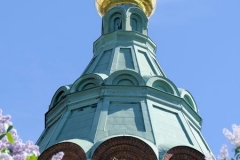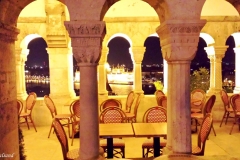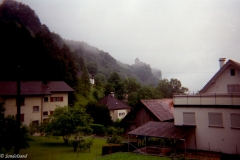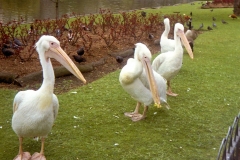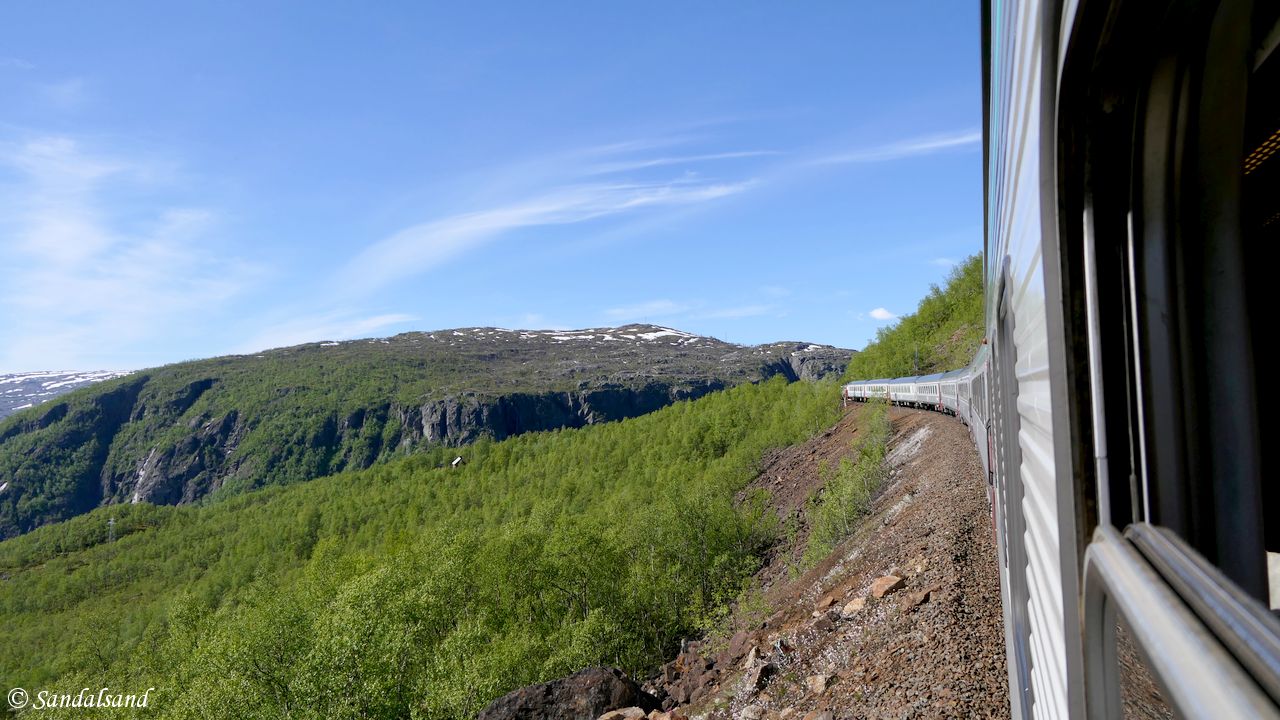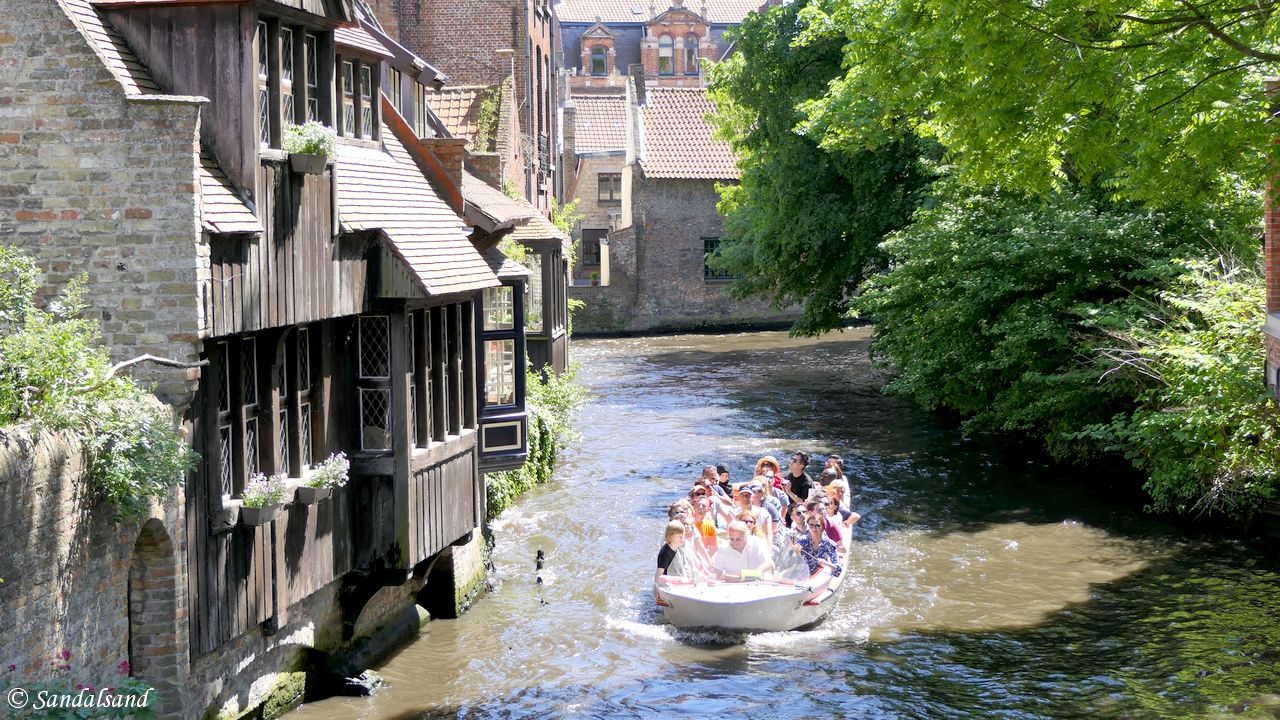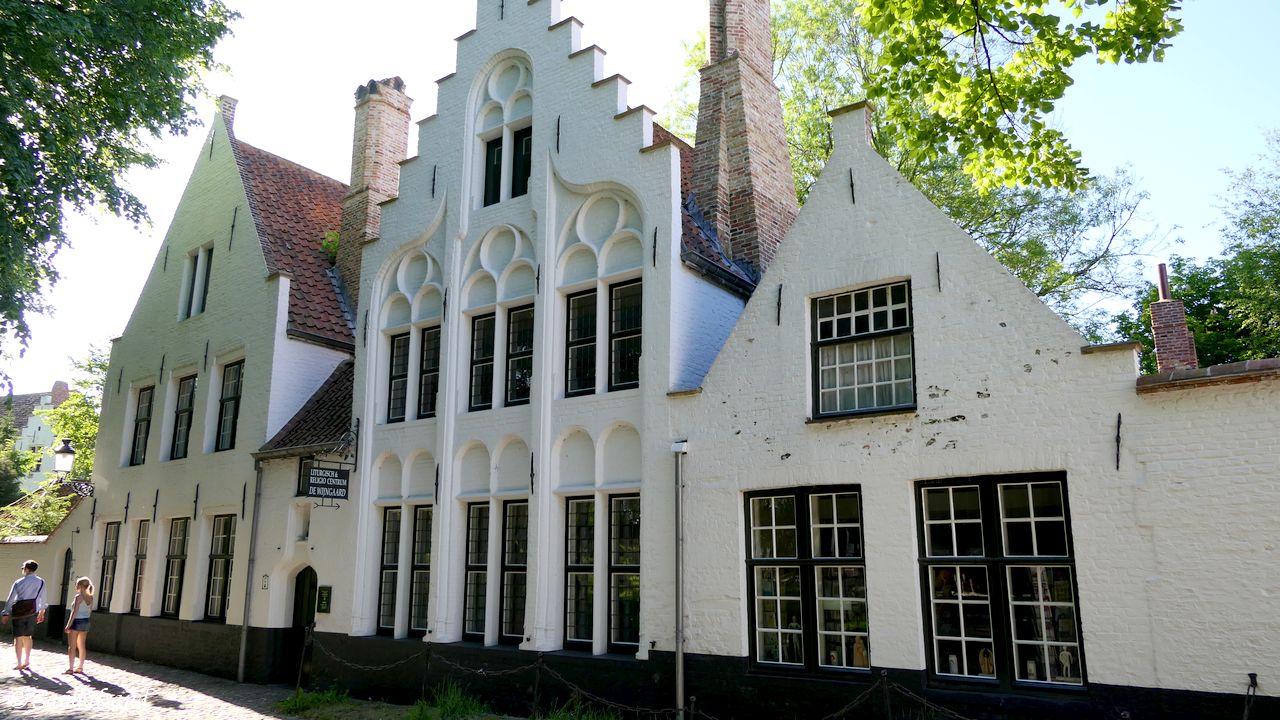Intro
States
Photos
Blog
Facts
Overall impressions
This is a picture from the “Old World”, the largely Protestant and ethnically quite homogeneous region stretching from Prague in the southeast to Ireland in the west to Scandinavia in the north – and to some extent Russia in the east. For four hundred years, between 1550/1600 and 1950/2000, countries in this region defined the world as we today know it. Geo-politically, economically, militarily, philosophically, culturally, and in terms of world languages.
All about this region is history. Everything older than 200 years fascinates Americans who come here. The OMGs emit at a constant pulse. This region hardly offers anything but 200+ years of historical artefacts. Asians who come here find consumers able to pay for their products. Africans coming here find nothing but a boot kicking them back home again.
The region’s population is (at least relatively speaking) in decline, it is ageing, the economic importance is becoming negligent, innovations take place elsewhere in the world, the region’s countries have for decades been vassal states under an external superpower. Europe as a whole is splitting apart in infighting, selfishness and an overburdened welfare state.
Countries
Armenia | Austria | Azerbaijan | Belarus | Belgium | Czechia | Denmark | Estonia | Finland | France | Georgia | Germany | Hungary | Iceland | Ireland | Latvia | Liechtenstein | Lithuania | Luxembourg | Netherlands | Norway | Poland | Russia | Slovakia | Sweden | Switzerland | Ukraine | United Kingdom
There are 25 countries in what Sandalsand has grouped as North and Central Europe. Click a country name to view all posts from each country.
My definition of North and Central Europe encompasses everything north of the Mediterranean Ocean, including parts of Eastern Europe. Sandalsand’s travels in this world region are numerous. Obviously, I have lived here all my life. If I was to attempt a resume of my travels in this region, I would not know where to start or finish, or how.
I have been to almost all countries in this region. The three exceptions are in the Caucasus. To be more specific, I have not been to Georgia, Armenia or Azerbaijan. Historically, they have been categorised as West Asia or even Middle East. In recent years, geographers have started to group the three under the Europe heading. I am including them here for the time being. They are most certainly on my bucket list, for many reasons.
Photo galleries
Open the box to view a multitude of picture galleries from Sandalsand’s travels in this region.
Click to show or hide
For the best experience, open a picture gallery in a new tab or window. You will find numerous galleries from Norway on another page. Read the introduction to Norway.
Posts from North, Central and East Europe
Find Norway entries on a separate page.
World Heritage #0527 – Religious monuments in Kyiv
There are many religious monuments in Kyiv, a city with high, gilded, dome-shaped church spires. Some of them belong to the two very important...
VIDEO – Ukraine – Chernobyl
Video impressions from a day-trip to the evacuated Exclusion Zone around the former Chernobyl nuclear power plant. You will discover scenes from the...
Visiting the Chernobyl exclusion zone
This is a guide to the Chernobyl exclusion zone. Visitors are only allowed inside on guided tours. Here is what you need to know and expect....
Pictures from the Netherlands
This collection of pictures from the Netherlands, concentrates heavily on images from Amsterdam and from the air. I will have to make it back to...
Pictures from Sweden
This collection of pictures from Sweden concentrates on the capital of Stockholm. There is also a handful from the north of the country. Consult all...
The Ofoten line – wild, beautiful and important
The Ofoten line is one of Europe's most awesome railway lines. It crosses Norway in less than 43 km, going from the fjord up into the mountains. The...
VIDEO – Norway – Ofotbanen
This is a video from Ofotbanen. The Ofoten Line (Ofotbanen) is a 43 km long railway from the port of Narvik to the Swedish border. It continues into...
Pictures from Belgium
This collection of pictures from Belgium is mostly from the capital of Brussels and Brugge (Bruges) a result of a couple of trips to the country....
Common and odd sights in Brussels
Do not get upset about only spending 24 hrs to find sights in Brussels. With a little bit of planning you will be able to discover a lot, and even...
World Heritage #1298 – Stoclet House
In 1911 a luxurious home to a wealthy banker and art collector, the Stoclet House, was finished. It spared no costs in its richly decorated exterior...
World Heritage #1005 – Horta’s town houses
It is such a pity with heritage sites that you can't actually visit and discover the true reason why they are on the list. Horta's four town houses...
75 noteworthy sights in Bruges
This article will introduce you to points of interest, or sights, in the old city of Bruges, Belgium. A large selection has been plotted on the map...
Procession of the Holy Blood
The Procession of the Holy Blood takes place on Ascension Day each year. More than 3,000 young and old inhabitants take to the streets of Bruges to...
World Heritage #0855 – Flemish Béguinages
Learn about the Flemish Béguinages. The white-coloured houses around a tranquil convent garden with high trees in the middle sends you mentally...
World Heritage #0943 – Belfries of Belgium and France
This serial heritage site, Belfries of Belgium and France, consists of 33 belfries scattered across both regions of Belgium and 23 in Northern...
World Heritage #0996 – Brugge
The historic centre of Brugge (or Bruges in English and French) is charming and picture postcard perfect. There is so much to see, discover, learn...
Pictures from Poland
This is a collection of pictures from Poland, the result of several trips to different parts of the country. Find all Poland entries on this...
VIDEO – Poland – The Malbork Castle
This is a video from the Malbork Castle. It was built by knights of the Teutonic Order in the late 13th century. They withdrew here after the...
World Heritage #0847 – Malbork
It took an extreme amount of red bricks to create the massive complex at Malbork. It is the world's largest castle of its kind. The UNESCO World...
Malbork Castle on a day trip from Gdansk
The Castle Museum at Malbork is one of the greatest historical attractions in Poland and a UNESCO World Heritage Site. In 1309 it became the capital...
A walk in Gdansk, part 2, plus Westerplatte
This is about a city walk in Gdansk, part 2. There is so much to discover by walking the streets of the historical city of Gdansk, Poland, that I...
A walk in Gdansk, part 1
Join in on a walk in Gdansk, part 1. This is the first of two walking routes through the historic city centre of Gdansk, Poland. It was largely...
Gdansk – past and present
The history of Gdansk is that of being squeezed between the great powers and peoples of Europe. Its fate has been on the table of high level...
World Heritage #0559 – Drottningholm
What makes Drottningholm so outstanding is how the different influences from the wider world have set their mark on the park and buildings in it....
If countries were people, England and France would be old men. Italy would be dead. Compared with them, America is in its 20s. (will.i.am)
A fact sheet
This is Wikipedia’s introduction to Europe as a whole.
Map and numbers

- Area: 10,180,000 km2
- Population: 741,447,158 (2016)
- Population density: 72.9/km2
- Nominal GDP: $20.2 trillion (2017)
- PPP GDP: $26.7 trillion (2017)
- Per capita GDP: $27,330 (2017)
- HDI: 0.845
- Demonym: European
- Countries: 50 sovereign states, one observer, 6 with limited recognition
- Dependencies: 6 dependencies
Geography
Europe is a continent located entirely in the Northern Hemisphere and mostly in the Eastern Hemisphere. It is bordered by the Arctic Ocean to the north, the Atlantic Ocean to the west and the Mediterranean Sea to the south. It comprises the westernmost part of Eurasia.
Since around 1850, Europe is most commonly considered as separated from Asia by the watershed divides of the Ural and Caucasus Mountains, the Ural River, the Caspian and Black Seas and the waterways of the Turkish Straits. Though the term “continent” implies physical geography, the land border is somewhat arbitrary and has moved since its first conception in classical antiquity. The division of Eurasia into two continents reflects East-West cultural, linguistic and ethnic differences, some of which vary on a spectrum rather than with a sharp dividing line. The border does not follow political boundaries, with Turkey and Russia being transcontinental countries.
Europe covers about 10,180,000 square kilometres, or 2% of the Earth’s surface (6.8% of land area). Politically, Europe is divided into about fifty sovereign states of which the Russian Federation is the largest and most populous, spanning 39% of the continent and comprising 15% of its population. Europe had a total population of about 741 million (about 11% of the world population) as of 2016. The European climate is largely affected by warm Atlantic currents that temper winters and summers on much of the continent, even at latitudes along which the climate in Asia and North America is severe. Further from the sea, seasonal differences are more noticeable than close to the coast.
History
Europe, in particular ancient Greece, was the birthplace of Western civilization. The fall of the Western Roman Empire in 476 AD and the subsequent Migration Period marked the end of ancient history and the beginning of the Middle Ages. Renaissance humanism, exploration, art and science led to the modern era. From the Age of Discovery onwards, Europe played a predominant role in global affairs. Between the 16th and 20th centuries, European powers controlled at various times the Americas, almost all of Africa and Oceania and the majority of Asia.
The Age of Enlightenment, the subsequent French Revolution and the Napoleonic Wars shaped the continent culturally, politically and economically from the end of the 17th century till the first half of the 19th century. The Industrial Revolution, which began in Great Britain at the end of the 18th century, gave rise to radical economic, cultural and social change in Western Europe and eventually the wider world.
Both world wars took place for the most part in Europe, contributing to a decline in Western European dominance in world affairs by the mid-20th century as the Soviet Union and the United States took prominence. During the Cold War, Europe was divided along the Iron Curtain between NATO in the West and the Warsaw Pact in the East, until the revolutions of 1989 and fall of the Berlin Wall.
Source
Wikipedia on a Creative Commons Attribution-ShareAlike License. Date: 2018-06-22













